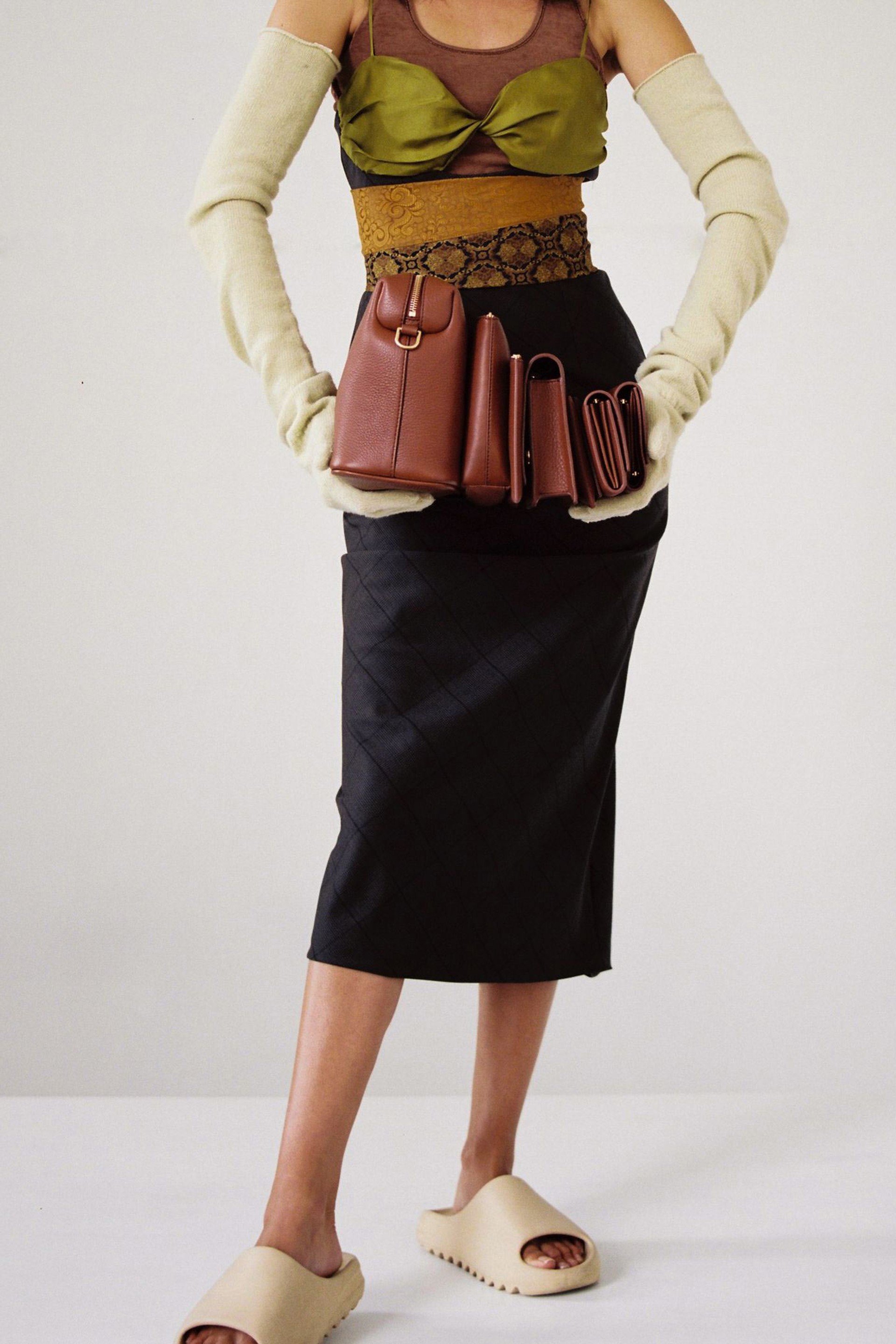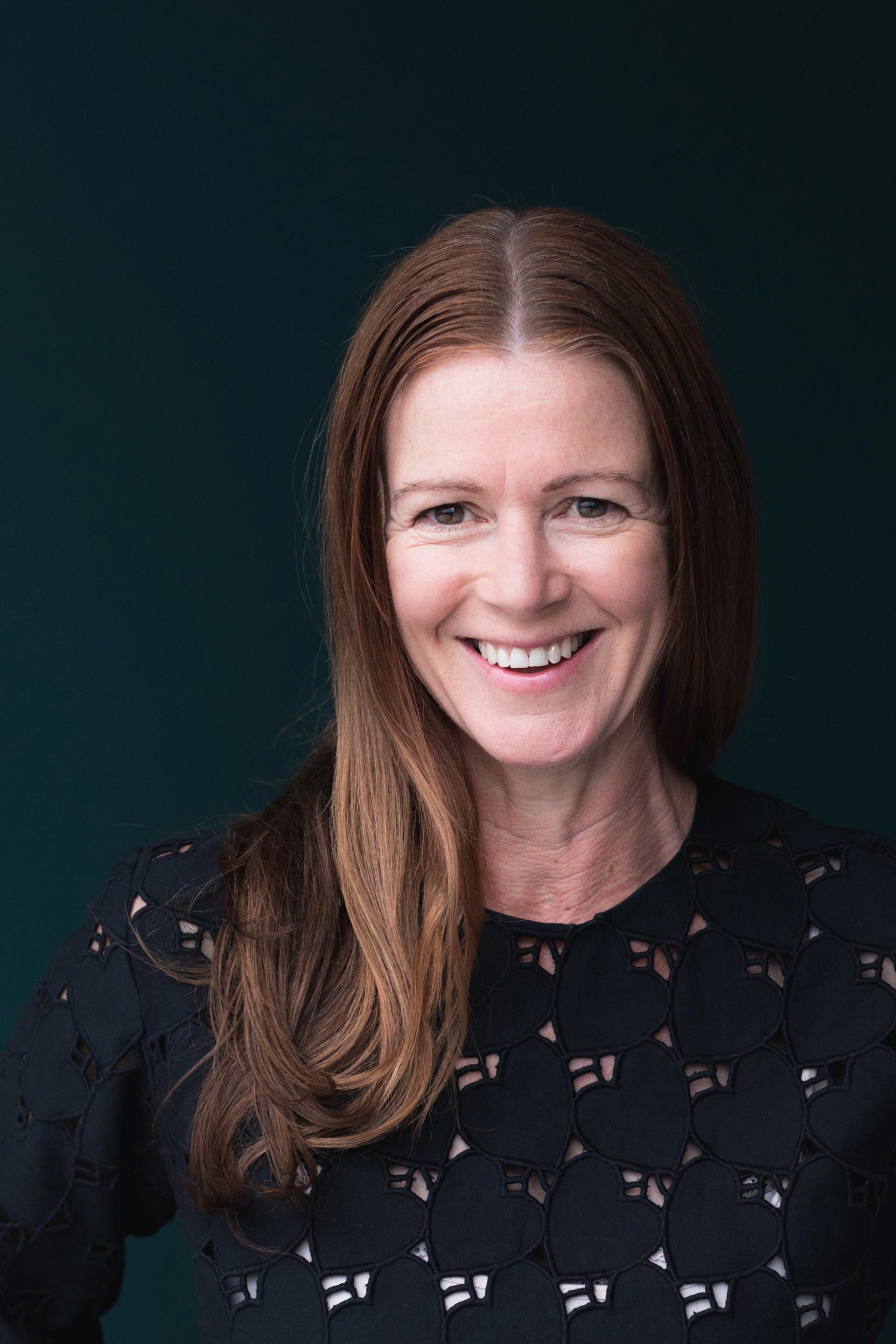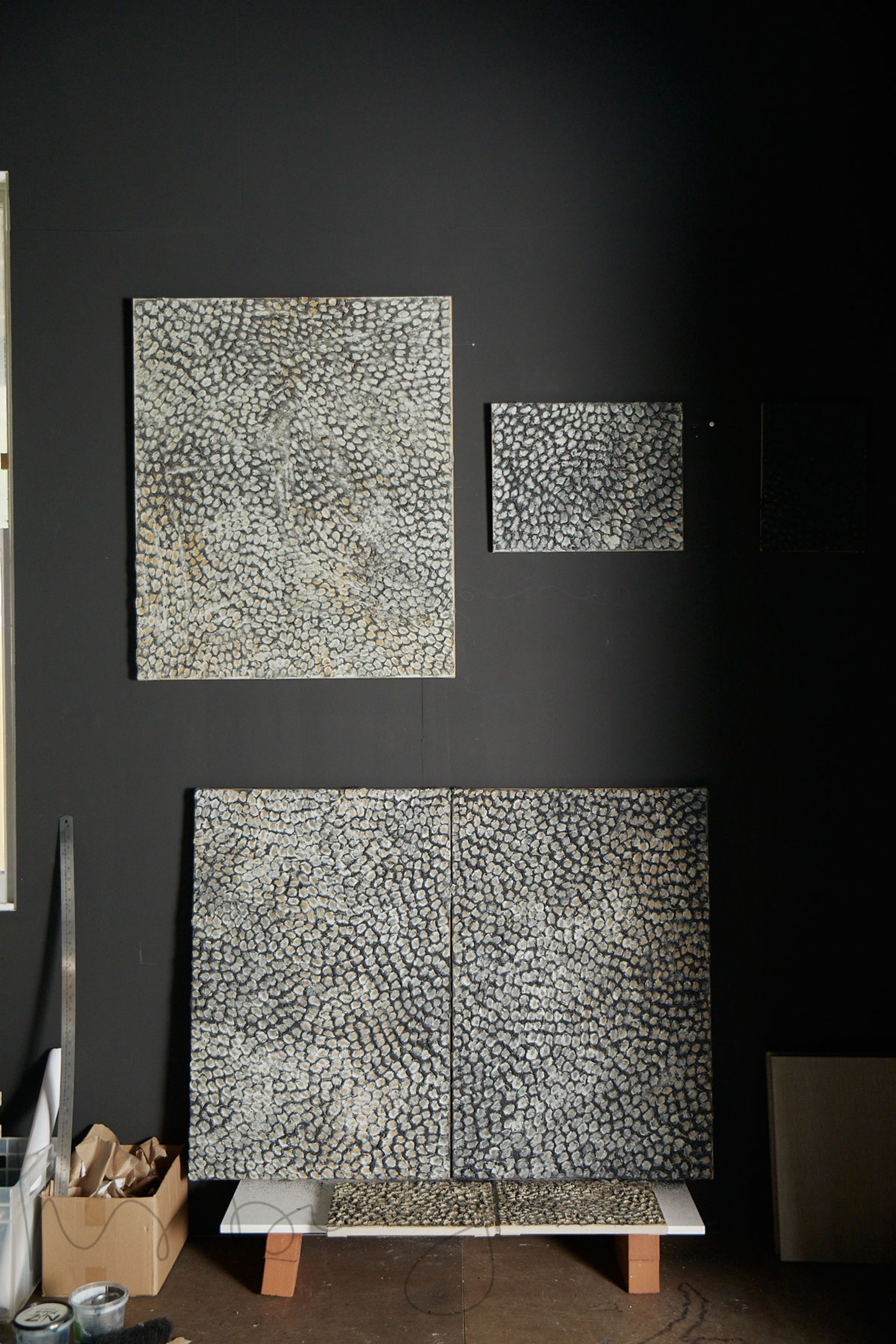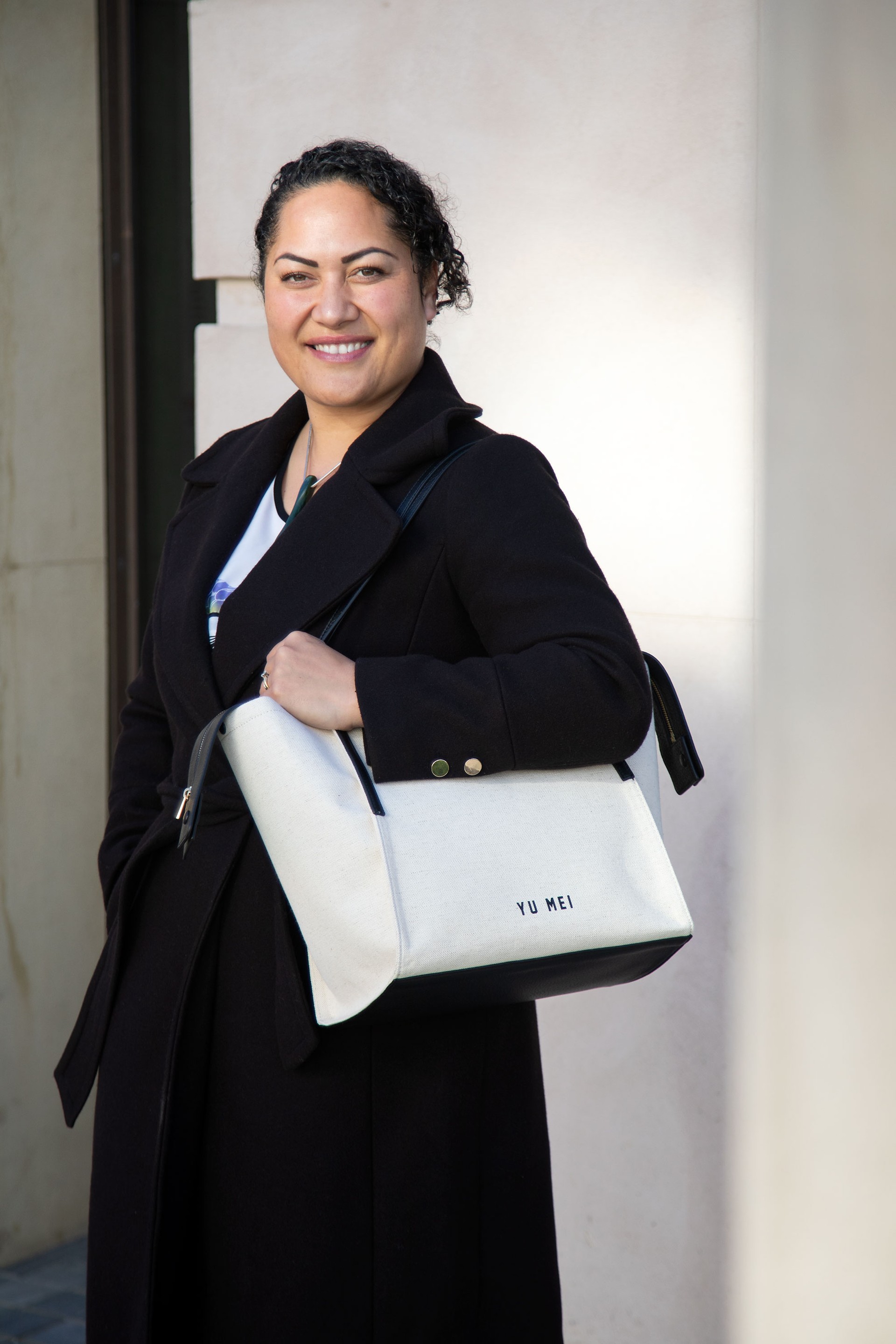Leather vs. Alternatives: Beckie Calder-Flynn
Environmental Scientist and Analyst Beckie Calder-Flynn
As an environmental scientist and analyst, Beckie cares deeply about the planet and the effects we’re having on it. In her previous role at the Ministry of Environment, she worked as a scientist and analyst on the State of Environment reports for New Zealand, leading aspects of science for policy around freshwater issues. Currently on a well-deserved career break from this, she’s spent the past few months swimming with whales in Niue, in her role as Divemaster and humpback whale guide. She also works as a sustainability officer for a cultured meat company in the Netherlands, leading sustainability initiatives for the company and helping them integrate sustainability considerations.
A couple of years ago, Beckie Calder-Flynn got in touch with us via Instagram. She was on the hunt for a regenerative bag, and wasn’t sure if a leather one was the answer. We sent through our thoughts on the subject, and some of the research we’d done around it—after which she went and did her own. But we’ll let her tell you all about it in her own words.
Doing the right thing can be a game of snakes and ladders. We’ve all been there—you finish a smoothie with compostable packaging only to not have a compost bin, so it goes into landfill. You switch to almond milk, only to find out the water footprint is comparable to dairy milk. You ditch plastic bags but discover the production of tougher alternatives uses fossil fuels.
I found myself in this very situation when I recently thought about buying a bag. I choose not to eat meat or animal products on the grounds of concern for animal welfare and environmental damage, so at first, leather was totally off the menu for me. While leather can be a durable, high quality, luxury fabric that clothes us, protects us and assists us, there were things I was concerned about in terms of sustainability.
Most of the leather in the fashion landscape comes from cows, whose waste is New Zealand’s largest source of methane [1]—an atmosphere-warming greenhouse gas that contributes 44% of New Zealand’s total greenhouse gas emissions and 32% [2] of global methane emissions [3] , as well as a driver of freshwater pollution and deforestation. I also had concerns about animal welfare, with the majority of the world’s cows being factory farmed, as well as the chemical-intensive tanning process, which prevents biodegradable properties and sees a lot of leather ending up in landfill.
Knowing this, and feeling that none of these things align with my values, I excitedly—and somewhat naively—keyed in the search term ‘vegan leather bags’ and started scrolling. Just as I was about to hit ‘Add to Cart’, I noticed in the materials section of the product page. It said ‘Composition: plastic.’
In trying to avoid animal suffering by buying vegan leather, I ran into another brick wall with plastic. Therein lies one of the struggles with conscious consumption. Making considered decisions about the products we buy is relatively easy when there’s a single ethical value to satisfy. But sustainability is about our impact as a whole, and competing issues rarely all line up into one perfect solution.
There’s so many factors to consider, including the welfare and treatment of animals, pollution from production or disposal, harm to the environment or labourers, the option to support local and small businesses, the desire for quality, durable products, and, of course, whether you need or can afford a product.
At the end of the day, purchasing anything is ultimately a decision about whether the product fits our needs, and what values it satisfies. What’s more, the right thing for you doesn’t have to be the right thing for someone else—we each have our own set of values, and these can influence our decisions about conscious consumption.
Personally, I wanted something to align as closely with my values as possible. And so began my research.
Circularity
A big factor for me is the circularity of a product. Circular design has become a guiding principle for many environmentally minded companies, and is becoming a core pillar of sustainability—we see it in economics, government policy, food, and increasingly textiles and manufacturing. Taking a circular approach to creating, consuming, or choosing to purchase a product, means considering the start, middle, and end of its lifespan, and trying to do right across these. This means thinking about how the product is created, from the origin of materials to the labour, processing and production practices. It means considering the lifespan of a product, its durability and how long it will last. And it means taking into account the end of life—can the product be used again or refurbished? Can it be diverted from landfill?
Okay—so in addition to materials that fit my values, I’m now looking for a bag that is designed to consider the production, use and afterlife. And starting to regret ever thinking about buying a bag.
Leather Alternatives
After a lot of umm-ing and ahh-ing about my opinion on using leather, I decided to investigate the alternatives. Not surprisingly, the major alternative is currently plastic—great if your sole desire is to have an animal-free bag, not great if you are concerned about the ever-increasing amount of plastic polluting our planet. Almost immediately I struck plastic off the list. Concerns about plastic as a material have, however, contributed to innovation in the fashion and leather industry. So what options are there?
Mushrooms have started getting the attention they deserve—across things like food, medicine, materials, and waste management. They’re also currently being developed as a luxury fabric. The mycelium ( a ‘root’ like network that forms a matting ) can replicate the feel of soft leather, with brands like Hermés and Adidas using mushroom derived fabric. However, there are still questions about how durable it is, and it also remains at a higher price point, so isn’t yet particularly accessible. And while mushroom fabric also has the potential to be able to be composted at the end of its life, at the end of the day, even most alternative fibres and materials need to be tanned ( the process of pickling and colouring the product to change its chemical composition, and ensure that it doesn’t degrade ). Therefore, tanning is one of the areas we should be looking to innovate in.
Then there’s pineapple leather, which uses the waste parts of pineapple grown for the food industry to create a leather-like fabric, with Piñatex being the most well-known brand available. A positive of this is that pineapple waste creates a secondary income stream for farmers, keeps food waste from being burnt or ending up in landfill ( where it can release greenhouse gas emissions ), and is another cruelty-free option. If it can be shown to be compostable, then it would offer a far lower environmental footprint and big points for circularity.
However, testing indicates it is less durable than leather, meaning it would need to be replaced more. Another downside of pineapple leather is its rough hand feel, which is one of the reasons a product actually sells ( or doesn’t! ). Ultimately, even a sustainable product has to have good design principles and a high quality feel, to make it desirable enough for people to want to use for a long time.
Another option being developed is cell-based leather ( or cultivated leather ), which takes tissue samples from animals and creates leather in the lab, replicating natural processes to grow animal skin without having to harm animals. This would produce leather that is cruelty free with the same durability properties as traditional leather, and without the huge environmental footprint of cows. Yet this technology is likely years away from coming to market, and will inevitably be expensive at first.
So where did this leave me and my bag buying? None of these options were particularly accessible for me.
But researching leather alternatives got me thinking more about leather and how not all leather is created equally. If plastic as the major alternative doesn’t align with my values, and co-products have a higher impact than by-products, then could I find a leather that ticks more of the boxes?
Discovering Deer Nappa
Prior to the situation I found myself in, I hadn’t ever really considered leathers that aren’t from cows. Given the sensitivities about some of the issues with cow leather, and growing public perception and concern for environmental issues, I wondered if there was dissociation between thinking of leather and thinking of the animal it came from—with consumers not wanting to think too deeply about it.
I found that other people felt this way too, and also hadn’t considered leathers beyond cow leather. Digging deeper into an area I didn’t think I would have ever found myself in, I learnt the following:
Deer are raised for meat, not factory farmed like many cows, meaning they live outdoors in groups and are able to exhibit more of their natural behaviours. What’s more, as Yu Mei notes on their site, Deer Nappa is reclaimed responsibly in New Zealand under the Five Freedoms, which ensures deer are free from hunger and thirst, discomfort, pain, injury and disease, free to express normal behaviour and free from fear and distress. In New Zealand, deer are also a pest species and are hunted—the co-benefits being that they live a natural life until they are killed, and their removal contributes to improving biodiversity. Deer are also a lower emissions animal than cows, reducing their environmental impact, and are raised in far lower numbers than cows.
On top of this, deer leather, if treated correctly, is more likely to be able to be composted and out of landfill, and retains the durability and quality that leather provides over the leather alternatives.
So that’s how I came to Yu Mei. The major selling points for me from a holistic consumption perspective included: the animal welfare and low-ecological footprint of NZ deer, compared with cows; the options Yu Mei offer consumers to help keep bags in circulation ( such as their refurbishment services and Buyback scheme ); having lower-footprint tanning and processing to reduce their overall environmental footprint; and their waste minimisation efforts through things like Archive Events. I also think that by supporting a small New Zealand business, with a focus on durability and quality, means the product will last longer, and money I spend stays in NZ.
Sitting back, I thought about how using fabric from an animal definitely didn’t align with the values I started this quest on. But I couldn’t ignore the fact that compared to the alternatives, deer nappa ticked more of the boxes than any other option I had been able to find…
Coming Full Circle
So now I’m back to ( almost ) where I started, in that I found a fabric that fits with the values I care about—and it surprisingly happens to be an animal product. What I thought was my primary concern, animal welfare, had to be weighed against my other values, to end up with a decision that satisfies as many of these as possible.
My research raised another important problem for holistic consumption—it simply isn’t possible to give this level of research and thought to every item we want to buy, and had I not become so invested in finding the answer, I would have given up long ago and settled for a plastic bag. However, more and more companies are recognising this, and being more upfront highlighting their sustainability efforts and features of their products ( but beware of greenwashing, a topic for another day! ). And once you know what to look for, and what matters to you, it becomes easier to know where to start.
The things that matter to me the most are reducing my consumption, minimising the impact of my consumption, and voting with my dollars. After thinking holistically, researching, and comparing my options with my values, I’ve landed on deer nappa leather as the option for me. If I can’t call myself ‘vegan’ ( I title that I don’t care about anyway ) because I am comfortable purchasing this option so that I don’t fuel demand for more plastic, am choosing a material that is high quality and won’t break after six months, and ensuring there are end-of-life options for it—then that’s a title I’m happy to lose.
Bag 0
Duties and taxes included for Australia and New Zealand
Carbon Neutral Shipping
Shipping
| New Zealand | Complimentary Shipping over $50 NZD, Complimentary Returns, Click & Collect |
| Australia | Complimentary Shipping over $200 AUD |
| Rest of World | Complimentary Worldwide Shipping over $200 USD |
Areas
| New Zealand | Orders shipped within 2-3 working days, sent via tracked Courier Post. |
| Australia | Orders shipped within 2-3 working days, sent via tracked DHL Express |
| Rest of World | Orders shipped within 2-3 working days, sent via tracked DHL Express |
New Zealand and Australia
Taxes and duties are included within the purchase price.
Rest of World
As orders are shipped from our New Zealand warehouse you may incur duties, clearance fees or local taxes. Yu Mei Ltd does not cover these charges and is not liable for any fees incurred; although we will always do our very best to ensure a smooth delivery to you. For more information, we advise you to check with your local customs agent.
Choose Your Shipping Region / Currency
Change Region / Currency
Join
Club Yu Mei
Club Yu Mei is a community of like minded, forward thinking individuals. It’s a place to celebrate those who inspire the Yu Mei brand and beyond. From interviews and ideas to events, debates, dinner parties and more, the Club is an inclusive space by real people, for real people. Unlock our cabinet de curiosités and discover the thought-provoking universe of Club Yu Mei.
Search
Popular Searches
Choose Your Shipping Region / Currency
By continuing to use this site you consent with our cookie policy.
To stay abreast of all things Yu Mei, join our Club newsletter and enjoy 10% off your first purchase.





